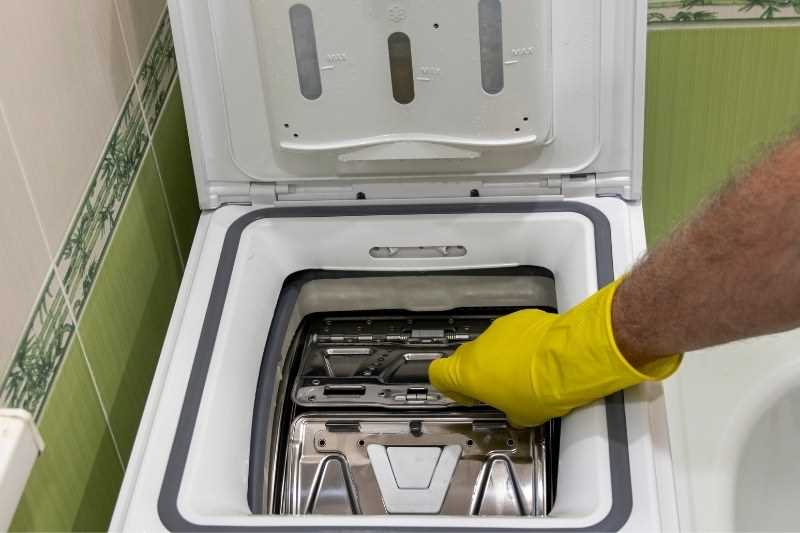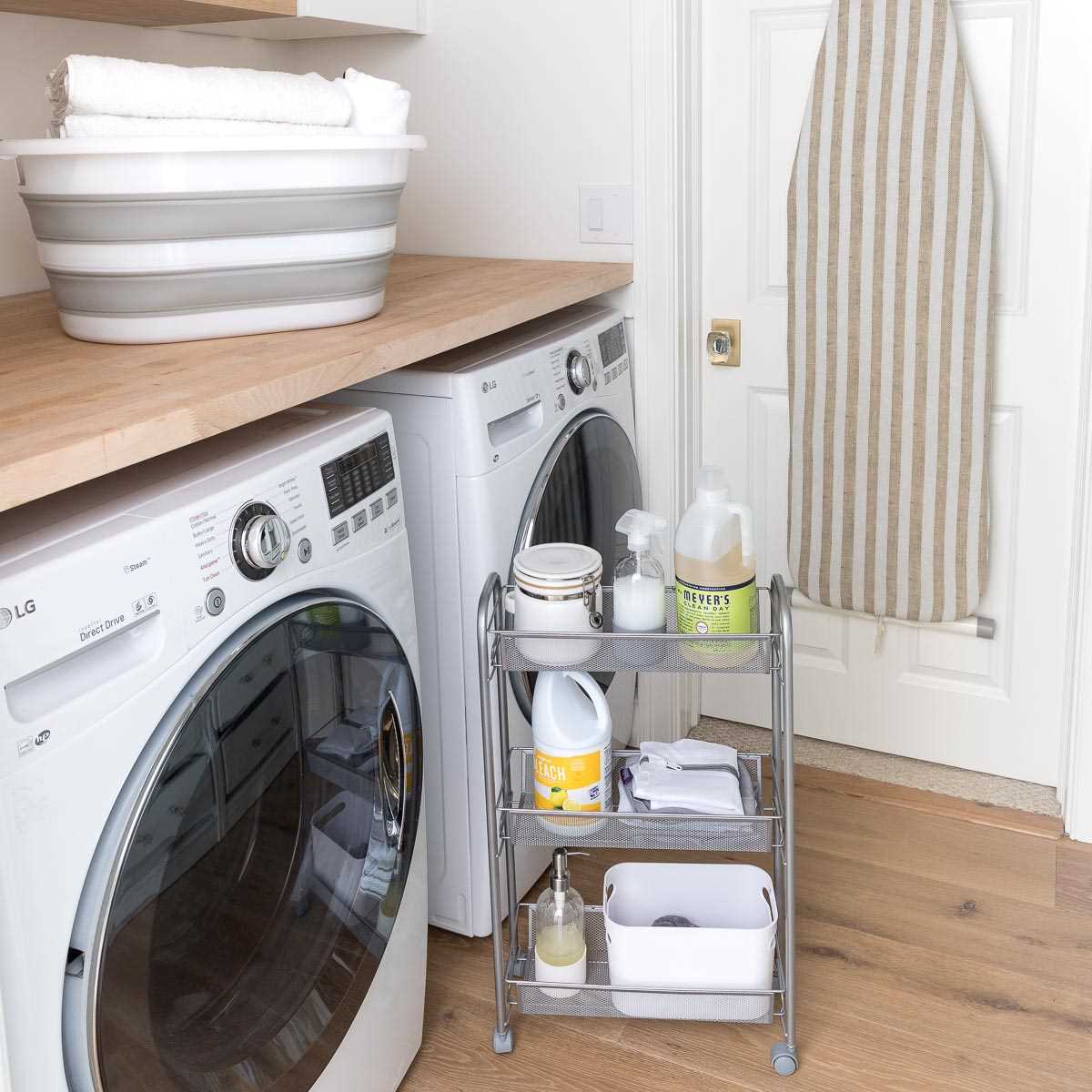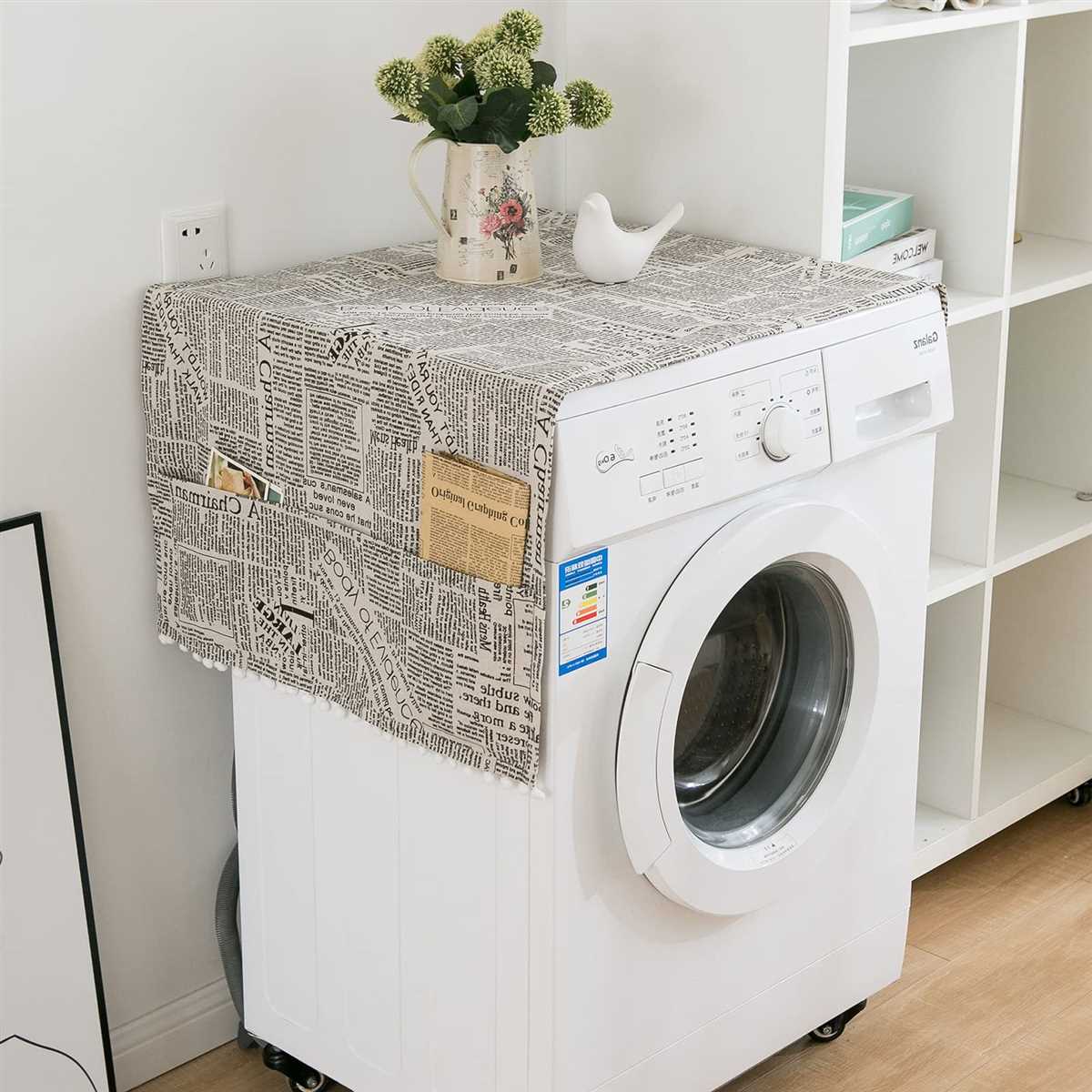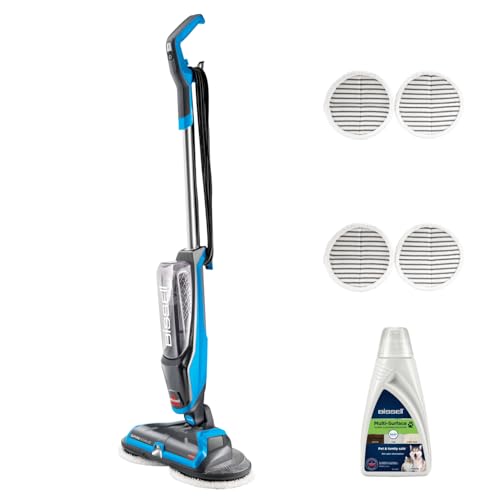




If you’ve ever had to put your washing machine into storage, you know how important it is to properly reactivate it when the time comes to use it again. In this comprehensive guide, we will provide you with expert tips on how to safely and effectively reactivate your stored washing machine.
First and foremost, before you begin the reactivation process, it’s crucial to thoroughly clean your washing machine. Over time, dust, dirt, and lint can accumulate inside the machine, potentially causing blockages and other operational issues. Use a damp cloth to wipe down the exterior surfaces, and remove any loose debris from the detergent dispenser and the filter.
Next, you’ll want to double-check the electrical connections. Make sure the power cord is securely plugged into an outlet and that there are no visible signs of damage. Additionally, check the water supply hoses for any cracks or leaks, and replace them if necessary. These simple steps will help ensure the safety and efficiency of your machine during the reactivation process.
Once you’ve completed the preliminary cleaning and checked the electrical connections, it’s time to run a test cycle. Fill the washing machine with a small load of laundry and run a regular cycle. This will allow you to check for any abnormal noises or vibrations, as well as confirm that the detergent and water are properly dispensing. If you notice any issues, it’s best to contact a professional technician for further inspection and repairs.
In conclusion, properly reactivating a stored washing machine is essential in order to maintain its performance and longevity. By following these expert tips, you can ensure that your machine is ready to tackle your laundry needs once again.
How to Reactivate a Stored Washing Machine: Expert Tips
Inspect the Machine for Damage
Before reactivating a stored washing machine, it is important to carefully inspect the machine for any visible damage. Look for any cracks or leaks in the exterior, as well as any unusual smells or noises. If you notice any damage, it is recommended to call a professional service technician to assess and repair the machine.
Clean the Interior
After inspecting for damage, it is essential to clean the interior of the washing machine. Start by removing any residual water or detergent left in the machine from its previous use. Wipe down the drum with a damp cloth to remove any dirt or debris. Additionally, run a cleaning cycle with a washing machine cleaner to remove any built-up residue and bacteria.
Check the Water Supply
Ensure that the water supply to the washing machine is turned on and functioning properly. Inspect the hoses for any signs of damage or leaks. If necessary, replace any damaged hoses before proceeding.
Connect the Machine
Once the machine has been inspected, cleaned, and the water supply has been checked, it is time to connect the machine. Plug the washing machine into a grounded outlet and ensure that the power supply is working effectively.
Run a Test Cycle
Before using the washing machine for regular use, it is recommended to run a test cycle. Fill the machine with a small load of laundry and detergent and run the machine through a full wash cycle. This will help to ensure that the machine is functioning properly and that any remaining residue or bacteria is removed.
Maintenance Tips
To keep your reactivated washing machine in optimal condition, follow these maintenance tips:
- Regularly clean the filter to remove any lint or debris.
- Avoid overloading the machine with too much laundry.
- Use the appropriate amount of detergent for each load.
- Inspect the hoses and connections periodically for any signs of leaks or damage.
- Wipe down the exterior of the machine to remove any dust or dirt.
In Conclusion
By following these expert tips, you can safely and effectively reactivate your stored washing machine. Remember to inspect for damage, clean the interior, check the water supply, connect the machine, and run a test cycle before regular use. Additionally, be sure to properly maintain the machine to prolong its lifespan and ensure optimal performance.
Preparing Your Washing Machine for Use
Before you start using your stored washing machine, there are a few steps you should take to ensure it is ready for operation. Follow these steps to prepare your washing machine for use:
Cleaning and Inspection
- Inspect the exterior: Check for any visible damage or signs of wear on the exterior of the washing machine. Look for any cracks or dents that could affect its functionality or safety.
- Clean the drum: Remove any dust or debris inside the drum. Wipe it clean with a damp cloth or sponge. Pay special attention to the rubber seals and gaskets.
- Clean the detergent dispenser: Remove the detergent dispenser and clean it thoroughly. Use warm soapy water to remove any residue or buildup.
- Inspect hoses and connections: Check for any leaks or damaged hoses. Replace any damaged or worn-out hoses before using the washing machine.
Electrical and Plumbing Connections
- Check the power supply: Ensure that the washing machine is properly connected to a grounded electrical outlet. Make sure the electrical cord is in good condition and not frayed or damaged.
- Check the water supply: Ensure that the water supply valves are open and water is flowing properly. Test hot and cold water settings to make sure both are working.
- Inspect the drain hose: Check the drain hose for any clogs or kinks that could prevent proper drainage. Make sure the hose is securely connected to a drain or sink.
Initial Test Run

- Start an empty wash cycle: Run an empty wash cycle without any clothes or detergent. This will help ensure that the washing machine is functioning properly and all components are working as intended.
- Monitor for any issues: Watch for any leaks, unusual noises, or error codes during the test run. If you notice any problems, consult the washing machine’s manual or contact a professional for assistance.
By following these steps, you can ensure that your stored washing machine is ready for use and will provide efficient and reliable service.
Cleaning the Inside of Your Washing Machine
Over time, washing machines can accumulate dirt, grime, and residue, which can affect their performance and efficiency. Cleaning the inside of your washing machine is an essential step to keep it running smoothly and ensure clean clothes with every wash. Follow these steps to deep clean your washing machine.
Gather Your Supplies
You will need the following supplies:
- White vinegar
- Baking soda
- Microfiber cloth
- Toothbrush
- Clean water
Step 1: Empty the Washing Machine
Start by emptying your washing machine. Remove any clothes or items that may be inside the machine. Check the pockets of your clothes to ensure that no small items, such as coins or keys, are left behind.
Step 2: Wipe Down the Drum and Door Seal
Use a microfiber cloth dampened with clean water to wipe down the drum and door seal of your washing machine. Pay attention to any visible dirt or stains. For stubborn stains, use a toothbrush dipped in a mixture of water and baking soda to scrub the affected areas. Rinse with clean water and wipe dry with a clean cloth.
Step 3: Clean the Detergent Dispenser and Filters
Remove the detergent dispenser from your washing machine and soak it in a mixture of warm water and vinegar. Use a toothbrush to scrub away any residue or build-up. Rinse well and allow it to dry thoroughly before putting it back into the machine.
Also, check for any filters in your washing machine and clean them according to the manufacturer’s instructions. Filters may trap lint, hair, or other debris, affecting the machine’s performance if not cleaned regularly.
Step 4: Run a Cleaning Cycle
Now it’s time to clean the interior of your washing machine. Fill the detergent dispenser with two cups of white vinegar and set the machine to run a hot water cycle. The vinegar will help remove any lingering odours and break down any soap scum or build-up inside the machine. Once the cycle is complete, wipe down the drum and door seal with a clean cloth.
Step 5: Freshen the Machine
To freshen up your washing machine, sprinkle baking soda around the drum. Run a hot water cycle again to distribute the baking soda and remove any remaining odours. Once the cycle is complete, wipe down the drum and door seal with a clean cloth.
Step 6: Regular Maintenance
To keep your washing machine clean and fresh, perform regular maintenance tasks, such as wiping down the drum and door seal after each use, removing lint from filters, and removing any standing water in the drum after each wash. This will help prevent any build-up and maintain the performance of your machine over time.
Conclusion
Cleaning the inside of your washing machine is an important task that should be done regularly to maintain its performance and ensure clean clothes. By following these steps and performing regular maintenance, you can keep your washing machine running smoothly and efficiently for years to come.
Checking the Connections and Water Supply
- Make sure the washing machine is properly connected to a power source.
- Check if the power cord is plugged in securely and not damaged.
- Inspect the water supply hoses for any visible signs of wear and tear.
- Ensure that both the hot and cold water taps are turned on.
- Verify if there is sufficient water pressure for the washing machine to operate.
- If the washing machine is connected to a water inlet valve, check if it is functioning correctly.
It is important to ensure that all connections are secure and the water supply is adequate to prevent any potential leaks or malfunctions during the reactivation process.
Running a Test Cycle
Before starting to use a stored washing machine, it is important to run a test cycle to ensure that it is functioning properly. This will help identify any potential issues and allow you to address them before using the machine for regular laundry loads. Here is a step-by-step guide on how to run a test cycle:
- Check the water supply: Make sure that the water supply to the washing machine is properly connected and turned on. Ensure that there are no leaks or blockages in the water lines.
- Inspect the drain hose: Ensure that the drain hose is properly connected and free from any kinks or blockages. This will help prevent any potential drainage issues during the test cycle.
- Load the machine: Place a small load of laundry in the washing machine. It is recommended to use a load similar to what you would usually wash to get an accurate test.
- Select the appropriate settings: Choose the appropriate wash cycle, water temperature, and other settings based on the type of laundry you are testing with. Refer to the manufacturer’s instructions for guidance.
- Start the test cycle: Close the washing machine door securely and start the test cycle. Allow the machine to run through the entire cycle without interruption.
- Monitor the machine: Pay attention to any unusual noises, vibrations, or error messages that may occur during the test cycle. This could indicate potential issues with the machine.
- Check the results: Once the test cycle is complete, check the laundry to see if it has been cleaned effectively. Inspect for any signs of damage or incomplete washing.
- Address any issues: If you notice any issues during the test cycle, such as leaks, unusual noises, or unsatisfactory cleaning results, it is important to address them before using the machine for regular loads. Consult the manufacturer’s instructions or contact a professional for assistance, if needed.
By running a thorough test cycle, you can ensure that your stored washing machine is in proper working condition and ready for regular use.
Maintenance Tips for Long-Term Storage
1. Clean and Dry

Before storing your washing machine, make sure it is clean and dry. This will help prevent mold and mildew growth during the storage period.
Start by running a cleaning cycle using a washing machine cleaner or a mixture of vinegar and water. Pay special attention to the detergent dispenser and the drum. After the cleaning cycle, wipe down the interior and exterior of the machine with a clean, dry cloth.
2. Disconnect and Drain
Next, disconnect the washing machine from the power source and water supply. Turn off the water valves and drain any remaining water from the hoses and drum. This will prevent any potential leaks or water damage while the machine is in storage.
3. Remove and Store Accessories
If your washing machine has any removable accessories such as lint filters or water inlet hoses, remove them and store them separately. This will prevent any damage or loss during the storage period.
4. Secure Moving Parts

To avoid any damage during transportation or storage, secure the moving parts of the washing machine. This can be done by taping down the lid or door with masking tape or using straps to keep it closed.
5. Choose the Right Location
When storing your washing machine, choose a location that is dry, clean, and well-ventilated. Avoid areas that are prone to extreme temperatures or humidity, as these conditions can damage the machine.
6. Cover and Protect

Finally, cover your washing machine with a breathable fabric cover or tarp to protect it from dust and dirt. Avoid using plastic covers as they can trap moisture and lead to condensation.
7. Regular Maintenance Checks
While your washing machine is in storage, it is important to perform regular maintenance checks. At least once every three months, check for any signs of damage or wear. Inspect the hoses, belts, and electrical connections to ensure they are in good condition.
If any issues are detected, it is important to address them promptly to prevent further damage. Remember to consult the manufacturer’s manual for specific maintenance instructions for your washing machine model.
| Summary |
|---|
| To ensure your washing machine remains in good condition during long-term storage, follow these maintenance tips. Clean and dry the machine before storage, disconnect and drain it, remove and store any accessories, secure moving parts, choose an appropriate storage location, cover and protect the machine, and perform regular maintenance checks. By following these steps, you can reactivate your washing machine with ease when the time comes. |
FAQ
What should I do if my washing machine has been stored for a long time?
If your washing machine has been stored for a long time, there are a few steps you should take to reactivate it. First, make sure to clean the washing machine thoroughly inside and out. Then, check all the hoses, filters, and connections for any damage or clogs. Finally, run a few test cycles with just water to ensure that everything is working properly.
Can I use my stored washing machine without cleaning it?
No, it is not recommended to use a stored washing machine without cleaning it first. Dust and debris can accumulate inside the machine over time, which can lead to poor performance and potential damage. It is important to clean the washing machine thoroughly to ensure its proper functioning.
What products should I use to clean my stored washing machine?
There are several products you can use to clean your stored washing machine. One option is to use a mixture of vinegar and water to remove any buildup or residue. You can also use a washing machine cleaner specifically designed for this purpose. Additionally, make sure to use a soft cloth or sponge to avoid scratching the surface of the machine.
How often should I clean my washing machine?
It is recommended to clean your washing machine at least once every three months. Regular cleaning helps to remove any buildup, dirt, and residue that can affect the performance and longevity of the machine. However, if you notice any issues or unusual odours, it is best to clean the washing machine immediately to prevent further problems.
What are some signs that my stored washing machine needs reactivating?
There are a few signs that your stored washing machine may need reactivating. If the machine has been stored for a long time, it may not start or function properly when you first try to use it. You may also notice unusual noises, leaks, or poor cleaning results. In these cases, it is important to follow the steps outlined in the guide to reactivate your washing machine.
How can I reactivate a stored washing machine?
Reactivating a stored washing machine involves a few steps. First, you need to check the power source and make sure it’s connected. Then, you should check the water supply and make sure the valves are open. Next, run a maintenance cycle with hot water and detergent to clean the machine. Finally, you can start using the washing machine as normal.












